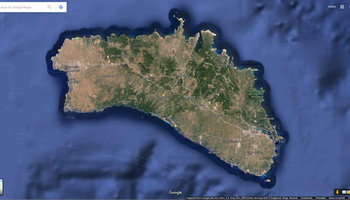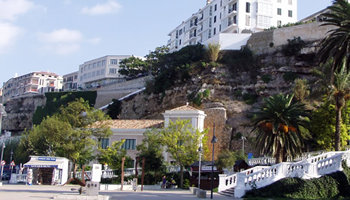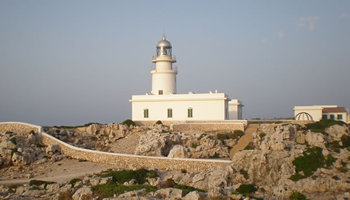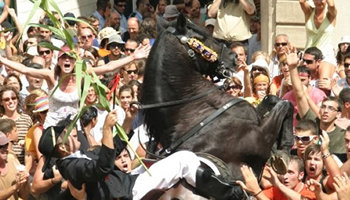Menorcan Culture
Thanks to the diversity and ever changing face of Menorca´s history it isn´t surprising that its culture is also varied and completely unique. It is a marvelous journey indeed descovering all contrasts. The architecture has already been mentioned with its history so here are the other aspects of this facinating island to tempt you.
Menorcan Gastronomy
This is without doubt one of the most popular characteristics of Menorca. The Mediterrainean diet is reknowned for its excelent combination of colour, taste and healthy ingredients. All this has been embellished by conquests and differing of cultures and periods of time. The high quality of the local produce; fresh fish, meat, fruit and vegetables lovingly prepared together produce excelent fare for all tastes. Certainly worth trying are:
- Lobster “caldereta”, served throughout the island in quality restaurants.
- Gin “Xoriguer”, in its original distillery in the port of Mahon.
- Coinga cheese, produced in the factory in Alaior, with its own denomination of origin, is accompanied by other brand names; Dalrit and Cardona and so on. All delicious and worth a try.
- Sobrasada and Carnixua (pronouced carni- sure) to name only two are sausage meats produced and sold locally. The menorcans also have their own equivalent of black pudding.
- Cakes, biscuits and pastries, most popular of which are “carquiñols”, “ensaimadas”, “formetjades”, “rubiols” and “pastisets”, although there is an infinite list of others all locally baked. The menorcans are renouned for their sweet tooth!
Menorcan Industry and Crafts
One of the main cultural values of Menorca is its internationally known industries, probably the most important being the shoe industry. During the middle of the 19th cent. the island developed its industries based on the local crafts, and so maintaining its originality. Nowadays world famous brands of boats, jewelry, ceramics as well as shoes all have started here. Don´t miss out on:
- A visit to shoe factories of Pons Quintana, in Alaior, or Jaime Mascaró in Ferreries.
- Buy or try a pair of our famous “avarques”, also worn by the spanish royal family. These original sandels were made of cow hide and car tyres but today there are designs for all tastes.
- See and be tempted by the beautiful designs of the Lora ceramics shop in the port of Mahon.
Art, Music and Folklore.
There is a great variety of artists here on the island, more than 100 painters have made Menorca their home due to the extraordinary light here. For all art lovers this island is a haven:
- Opera and Theatre: The Principal Theatre in Mahon is one of the oldest and most active in the country. Re-built in 1829 ( for the site dates back to the 14th cent.) its style is a copy of the italian theatres of the 18th century and every year world famous figures from the world of music and opera perform here. National theatre plays also tour and Menorca also sees all kinds of theatrical works.
- Classical Music:Music lovers find a wide variety of music throughout the year, but especially in the summer when the “Summer music Festival” takes place. Most churches and public buildings house concerts and there are always posters desplayed in towns and villages and the information offices are always a good source of information.
- Museums and expositions: There is a great variety of museums, expositions and art galleries to choose from, situated throughout the island, in all towns.
Menorca´s History
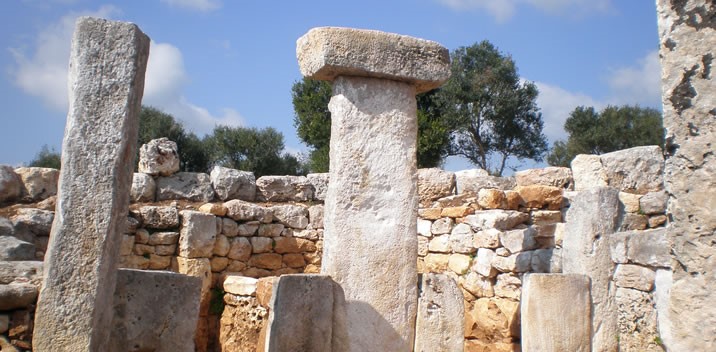
Perfectly located in the Mediterrainean, Menorca has been indispensible from both commercial and strategic aspects during its colourful history.
Menorca has been inhabited since remote times, but due to its isolated situation, it´s not likely that humans were here much before the end of the Neolithic Age.
The following is a summary of the most important chapters of the history of this beautiful island:
Pre-historic
the traces of this period are still very prominent on the islands landscape, fortunately these Talayot settlements have resisted the passing of time. These settlements are everywhere and especially in the south – south east corner of the island. You can expect to view fine examples of megalithic burial chambers and collective tombs called Navetas, Taulas (which are two slabs of rock, with another placed on top of them in a T shape, much like the structures at Stonehenge) and Talayots.
Curiosity: This monuments are only found here in Menorca.The island council have just recently started to clean, maintain and promote the islands major archaeological sights, and therefore an admission is paid.
Phoenicians, Greeks and Cartagens
The island served as a commercial link for the first two civilizations and military for the Cartagens.
Curiosity:Mahon´s name comes from the name Magón, who was the brother of the famous cartagen general, Hannibal.
Romans
The Roman Empire also found Menorca irresistable and stayed from 123 b.c. for 500 years convirting it in “Balearis Minor”. In Mahon´s museum you can see many roman remains.
Curiosity: The roman name still partially stands today in the island´s name as the romans commonly called "Minorica".
Vandals and Byzantines
Following the Romans, came turbulant years of conquests and destruction, although some churches were restored at this time, too.
Curiosity: The Basilica at the beach of Son Bou seems to have been from this period and is undoubtedly one of the best conserved known.
Islam “Menurka”
In the year 903 a.d. Califato of Cordoba arrived iniciating arab rule which would endure several centuries. Few arquialogical remains are left from this period. The fort Santa Agueda contains some arab ruins.
Curiosity: many of the names on the island still have the arab prefix, “bini”, meaning “belonging to the son of”. Binibeca, Binisaida, Binixica are but a few.
The return of Christendom
In the 13th century, the kingdom of Aragon reconquered Menorca, ridding the island of its previous residents and repopulating the island with the peoples from Cataluña.Thus the island came under the reign of Mallorca and afterwards part of the Catalan-Aragon crown.
Curiosity: The island´s “Menorca Day” is celebrated on January 17th, the day the Alfonso III re-conquered the island.
The Dark Ages
After a period of relative calm and commercial success , from the 15th to the 17th century Menorca entered a turbulant time of civil wars and constant attacks from the Turkish Empire. Barbarroja (redbeard) was a particularly bloodthirsty pirate famous for his island raids, leaving the island almost without population.
Curiosity: during this period most of the Watch Towers were constucted along the coast of Menorca, ( Fornells, Sant Esteve, etc.,).
The 18th century and its dominations
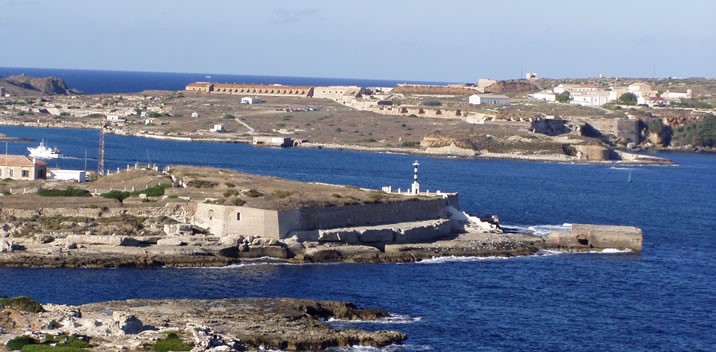
From 1708, and lasting some 500 years Menorca lived one of its most successful commercial periods under the domination of the British Empire. Richard Kane was the most popular of the Governors re-generating the island´s agriculture and trade. The second half, however, was characterized by its conquests and brief dominations of the french and spanish. During this time the english built Georgetown, later called Villacarlos and now Es Castell. The french founded San Lluis
Curiosity: during their seven year stay, during which, so they say, the Duke of Richelieu sampled a “new” sauce made from eggs and oil which he took back to France and today we know as “mayonaise”.
The 19th century – spanish domination and industry
With the Treaty of Amiens in 1802, Menorca was returned to the spanish who returned to a middle-ages agricultural approach. The building of La Mola fortress gave work to many islanders without work. During the second part of the century, various shoemakers in Ciudadela started trading, which would later revive the island´s economy.
Curiosity: History tells us that during the Treaty of Amiens, at the moment of handing over the island, a ship was entering the port, carrying an urgent despach from London which ordered the british Governor not to give over the island. Its delay prevented a change in the course of history …
The 20th century – war and tourism
The first years saw the crisis of losing Cuba, which badly affected the new shoe industry. 1906 was known as “the year of hunger” and many islanders emigrated to Cuba, Argentina and Uruguay. With the civil war, Menorca, along with the rest of Spain, again entered a dark age. The tourist “boom” began in the 60´s under Franco´s regime. Fortunately, Menorca was slow to begin and this has meant that the island has not been so densly built on giving it the enviromental characteristics to be named in 1993 by UNESCO as Biosfere Nature Park.
Curiousity: during the tourist “boom” the tour company Clarksons began a building project for ten tower hotels along the beach of Son Bou. Luckily due to financial difficulties, the work stopped.Can you imagine the hotels on the beach repeated several times over?

